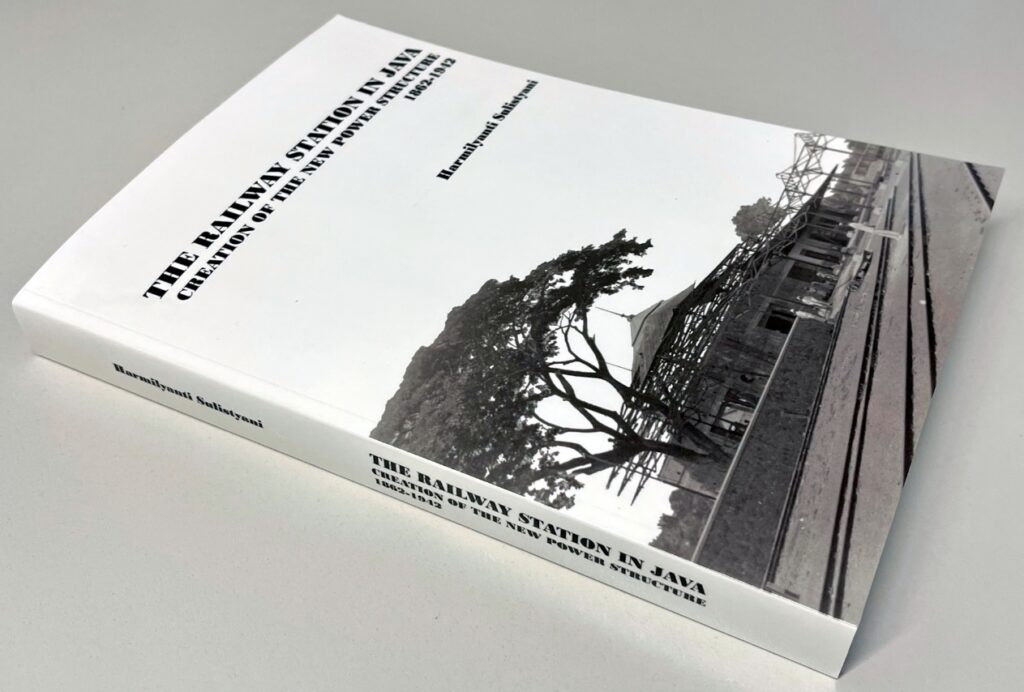By Harmilyanti Sulistyani
Being born and raised in Salatiga allowed me to see buildings with colonial architectural styles on various occasions. Salatiga, a small town at the foot of Merbabu Mountain, had many old buildings that were built during the colonial period. The buildings were not only residential houses but also schools, religious buildings, and offices. Some of the buildings are still used for daily activities today.
Unfortunately, the railway station building with colonial architecture and the rail transportation network in the area around Salatiga has been deactivated since 1976 because they cannot compete with other modes of transportation. Therefore, there was no experience of traveling by train and doing activities at the station in my childhood. I only had the experience of seeing a glimpse of the station building for a moment as I passed past the Tuntang Station.
I got the opportunity to ride a train once when I was studying in Solo and had to travel to Yogyakarta. At that time, I started to have an awareness that the station is a building that has several features because it accommodates train activities to transport large quantities of goods and passenger activities, however, many stations and train networks on Java Island have been decommissioned. It was a precious moment because since then I also realized that in Solo there are four railway stations that carry out the colonial architectural styles with different details. Solo Jebres Station features a neoclassical architectural style. Solo Balapan Station and Solo Kota Station are dominated by the Indies’ architectural style. The last one is Purwosari Station, which is dominated by steel frame structures, bringing a modern breath to its architectural style.
The question of why and how the architectural differences exist arises immediately. Because of my curiosity, the question became the reason for making it a college assignment. However, it was not easy to find the answer. The exploration to find information from previously written articles did not reveal an answer to the question. Attempts to obtain information from PT. KAI, the railway operator in Indonesia, did not yield many results. The data about the Java railway station seems to be tightly hidden somewhere. The article from the previous research still leaves many unanswered puzzle pieces. Several books were written by railway enthusiasts and PT. KAI did not describe many aspects that affected the architectural appearance of railway stations in Indonesia.
It took almost two decades to get the lucky chance to dig up more information about the railway station in Java. The opportunity to continue studying in the Netherlands for a doctoral degree is a gateway and starting point for gaining information. Access to describe interrelated aspects of train station construction and use in Java in general, and Solo in particular, is beginning to open. The data, from books and photos, in the Utrecht Spoorwegmuseum is full of the information needed to describe the life cycle of a train station in Java. A bunch of dossier archives at the National Archives-The Hague are very helpful in providing evidence of the conditions in the Netherlands Indies in colonial times. Because of the incomplete and very limited access to architectural drawings, photos from the Wereldmuseum-Rotterdam and Rijkmuseum-Amsterdam are able to fill in the gaps with information. The opportunities to meet with railway enthusiasts in the Netherlands also offer a wider insight into the train and station.
Unexpectedly, the final stage of the journey was faced with a problem due to health problems, and hence the completion time was delayed. Unfortunately, the scholarships to complete the studies have a time limit. At this point, I started looking for help to finish the manuscript. The proposal was sent to the Marinus Plantema Foundation because the output of my research is in line with the spirit of this foundation, which is to provide evidence to see a history fairly from two sides. The result could give a better understanding to look at the history of the colonial period between the Indonesian and Dutch people, so harmony can be created in the partnership. The board, Mr. Hans Blankvoort, was very responsive in communication, answering emails during the proposal submission process. I am grateful for the help from the Marinus Plantema Foundation for the final stage of my research. Through this story, I would like to thank you for the support from the Marinus Plantema Foundation, which enabled the manuscript on the railway station architecture in Java to be realized.
